Syn.: Calceolus parviflorus (Salisb.) Nieuwl., Criosanthes parviflora (Salisb.) Raf., Cypripedium bulbosum var. parviflorum (Salisb.) Farw., Cypripedium calceolus subsp. parviflorum (Salisb.) Hultén, Cypripedium calceolus var. parviflorum (Salisb.) Fernald, Cypripedium hirsutum var. parviflorum (Salisb.) Rolfe, Cypripedium luteum var. parviflorum (Salisb.) Raf.
Family: Orchidaceae Juss.
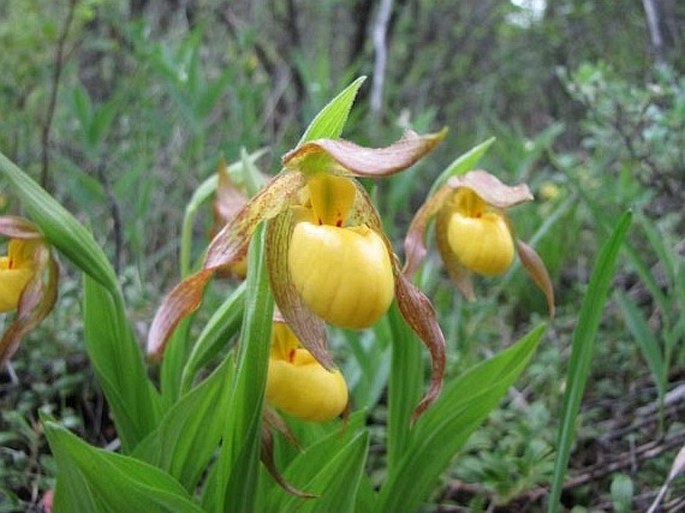
Distribution: North American species found in a large area from Alaska to Georgia and from British Columbia to the island of Newfounland, absent in some parts of prairies and in southeast of US the presence is only spotty. In the whole distribution area they are 3 varieties.
Ecology: Found in drier deciduous and mixed forests, from sea coast to almost 1500 m; variety C. p. var. makasin is found even in coniferous forests, wetlands and prairie and var. pubescens climbs up to 2900 m. Blooms from April to June.
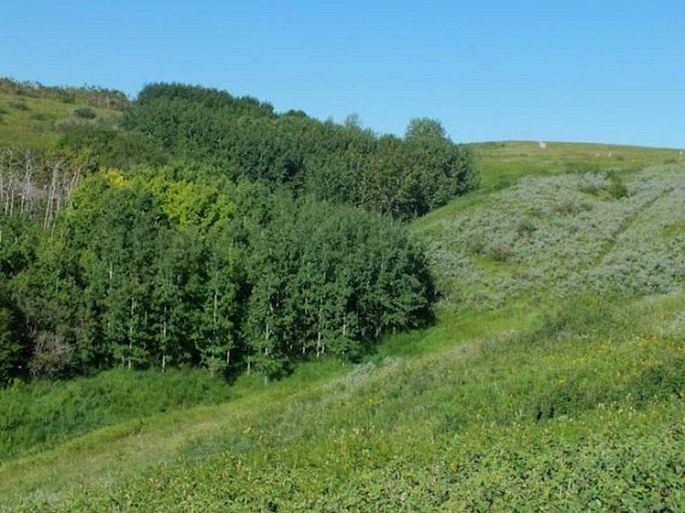
Description: Perennial herb, 15–30(–45) cm tall, stem erect, leaves alternate, (2–)3–5 per stem, oval to lance shaped, 5–15 cm long, 2.5–9 cm wide, prominently veined and plaited, stalks sheathing at base. Terminal flowers are single, sometimes more, yellow, showy; dorsal sepal and lateral petals twisted, 2–9 cm long, greenish, yellowish or brownish, darker striped; lateral sepals fused (connate), with forked tip, positioned under the lip; lip 15–54 mm long, bright yellow, sometimes white, with red or purple spots, slipper or pouch-like. Fruit is a capsule.
Threat and protection: Same as all orchids even this species is protected by CITES agreement. In some states of US it is listed as endangered (Connecticut, Illinois, Kentucky, New Hampshire, New York, Pennsylvania and Washington).
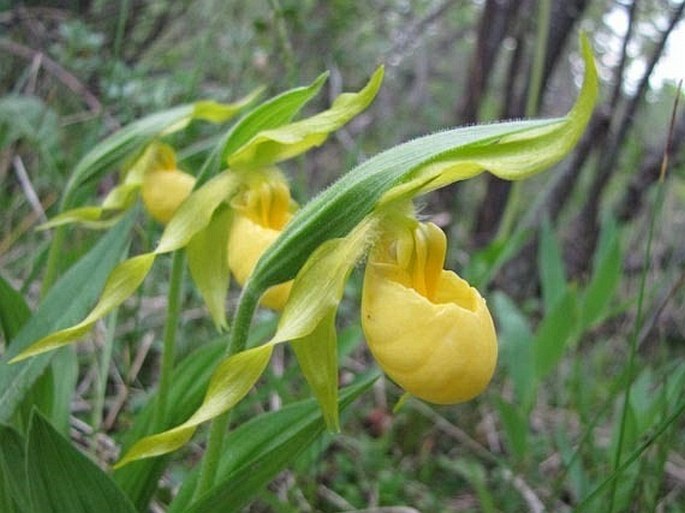
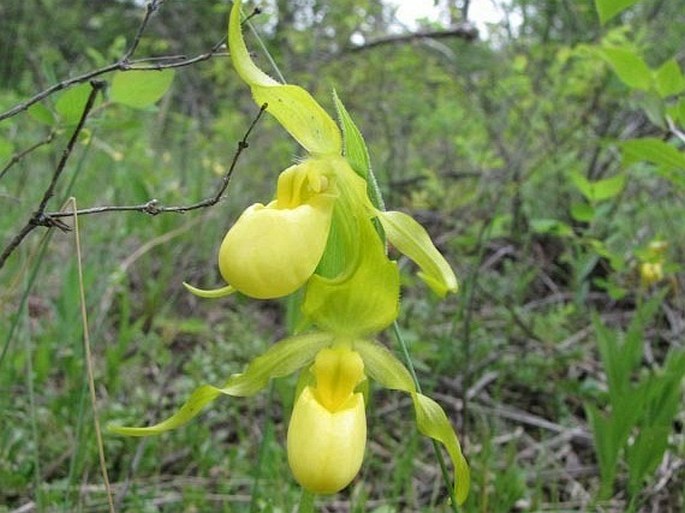
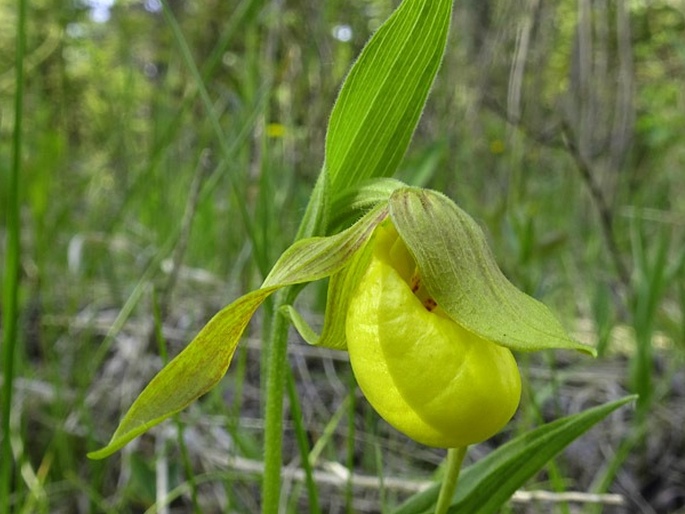
These images were taken in Canada, Alberta, Calgary, North Weaselhead Natural Environment Park (June 12, 2013) and Calgary, Nose Hill Park (June 17, 2013).


